Top Rankings
Hartford J1 School District ranks among the top 20% of public school district in Wisconsin for:
Category
Attribute
Science Proficiency
Highest science proficiency (Top 20%)
For the 2025 school year, there are 2 public preschools serving 925 students in Hartford J1 School District. This district's average pre testing ranking is 7/10, which is in the top 50% of public pre schools in Wisconsin.
Public Preschools in Hartford J1 School District have an average math proficiency score of 61% (versus the Wisconsin public pre school average of 41%), and reading proficiency score of 40% (versus the 37% statewide average).
Minority enrollment is 22% of the student body (majority Hispanic), which is less than the Wisconsin public preschool average of 38% (majority Hispanic and Black).
Overview
This School District
This State (WI)
# Schools
3 Schools
1,032 Schools
# Students
1,429 Students
339,535 Students
# Teachers
103 Teachers
24,694 Teachers
Student : Teacher Ratio
14:1
14:1
District Rank
Hartford J1 School District, which is ranked within the top 50% of all 444 school districts in Wisconsin (based off of combined math and reading proficiency testing data) for the 2021-2022 school year.
Overall District Rank
#199 out of 450 school districts
(Top 50%)
(Top 50%)
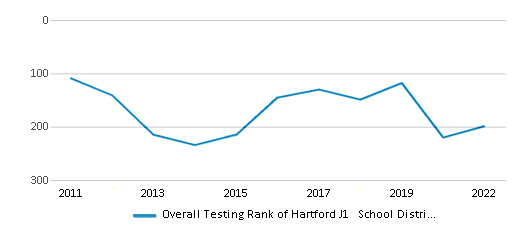
Math Test Scores (% Proficient)
47%
39%
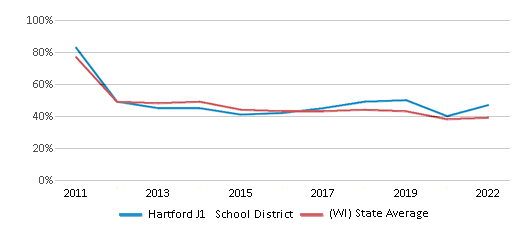
Reading/Language Arts Test Scores (% Proficient)
35%
38%
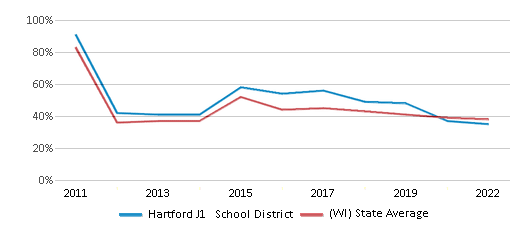
Science Test Scores (% Proficient)
56%
44%
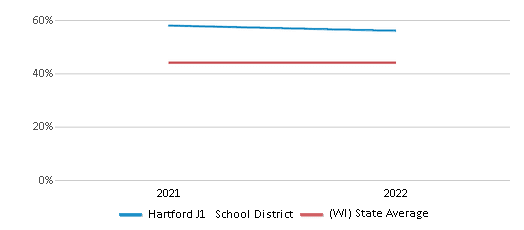
Students by Ethnicity:
Diversity Score
0.37
0.58
# American Indian Students
5 Students
3,435 Students
% American Indian Students
n/a
1%
# Asian Students
19 Students
15,647 Students
% Asian Students
1%
5%
# Hispanic Students
193 Students
52,197 Students
% Hispanic Students
14%
15%
# Black Students
39 Students
39,149 Students
% Black Students
3%
11%
# White Students
1,120 Students
209,143 Students
% White Students
78%
62%
# Hawaiian Students
n/a
297 Students
% Hawaiian Students
n/a
n/a
# Two or more races Students
53 Students
19,658 Students
% of Two or more races Students
4%
6%
Students by Grade:
# Students in PK Grade:
115
50,321
# Students in K Grade:
109
44,890
# Students in 1st Grade:
130
45,508
# Students in 2nd Grade:
127
45,837
# Students in 3rd Grade:
146
43,291
# Students in 4th Grade:
161
42,370
# Students in 5th Grade:
137
35,557
# Students in 6th Grade:
155
11,124
# Students in 7th Grade:
163
7,438
# Students in 8th Grade:
186
7,747
# Students in 9th Grade:
-
1,444
# Students in 10th Grade:
-
1,335
# Students in 11th Grade:
-
1,345
# Students in 12th Grade:
-
1,328
# Ungraded Students:
-
-
District Revenue and Spending
The revenue/student of $19,817 is higher than the state median of $17,039. The school district revenue/student has grown by 11% over four school years.
The school district's spending/student of $17,655 is higher than the state median of $17,011. The school district spending/student has grown by 11% over four school years.
Total Revenue
$28 MM
$13,869 MM
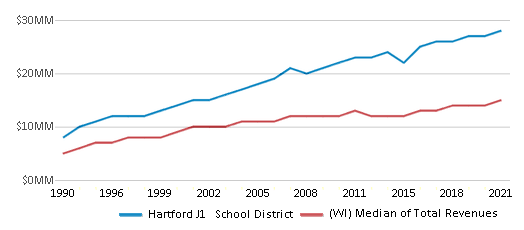
Spending
$25 MM
$13,846 MM
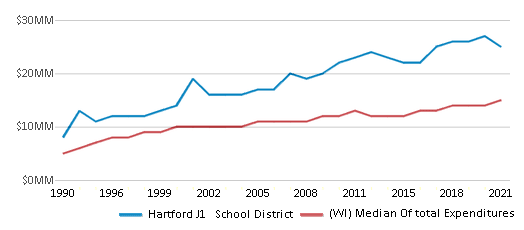
Revenue / Student
$19,817
$17,039
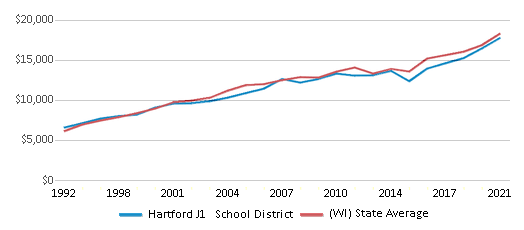
Spending / Student
$17,655
$17,011
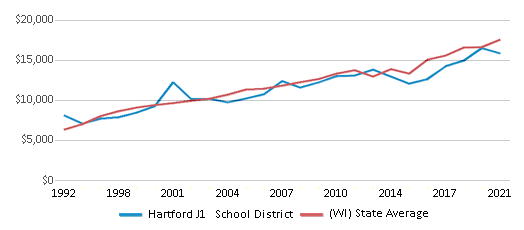
Best Hartford J1 School District Public Preschools (2025)
School
(Math and Reading Proficiency)
(Math and Reading Proficiency)
Location
Grades
Students
Rank: #11.
Rossman Elementary School
(Math: 63% | Reading: 40%)
Rank:
Rank:
8/
Top 30%10
600 Highland Ave
Hartford, WI 53027
(262) 673-3300
Hartford, WI 53027
(262) 673-3300
Grades: PK-5
| 456 students
Rank: #22.
Lincoln Elementary School
(Math: 59% | Reading: 40%)
Rank:
Rank:
8/
Top 30%10
755 S Rural St
Hartford, WI 53027
(262) 673-2100
Hartford, WI 53027
(262) 673-2100
Grades: PK-5
| 469 students
Recent Articles

Year-Round Or Traditional Schedule?
Which is more appropriate for your child? A year-round attendance schedule or traditional schedule? We look at the pros and cons.

Why You Should Encourage Your Child to Join a Sports Team
Participating in team sports has a great many benefits for children, there is no doubt. In this article you will learn what those benefits are.

White Students are Now the Minority in U.S. Public Schools
Increasing birth rates among immigrant families from Asia and Central and South America, combined with lower birth rates among white families, means that for the first time in history, public school students in the United States are majority-minority. This shift in demographics poses difficulties for schools as they work to accommodate children of varying language abilities and socio-economic backgrounds.





